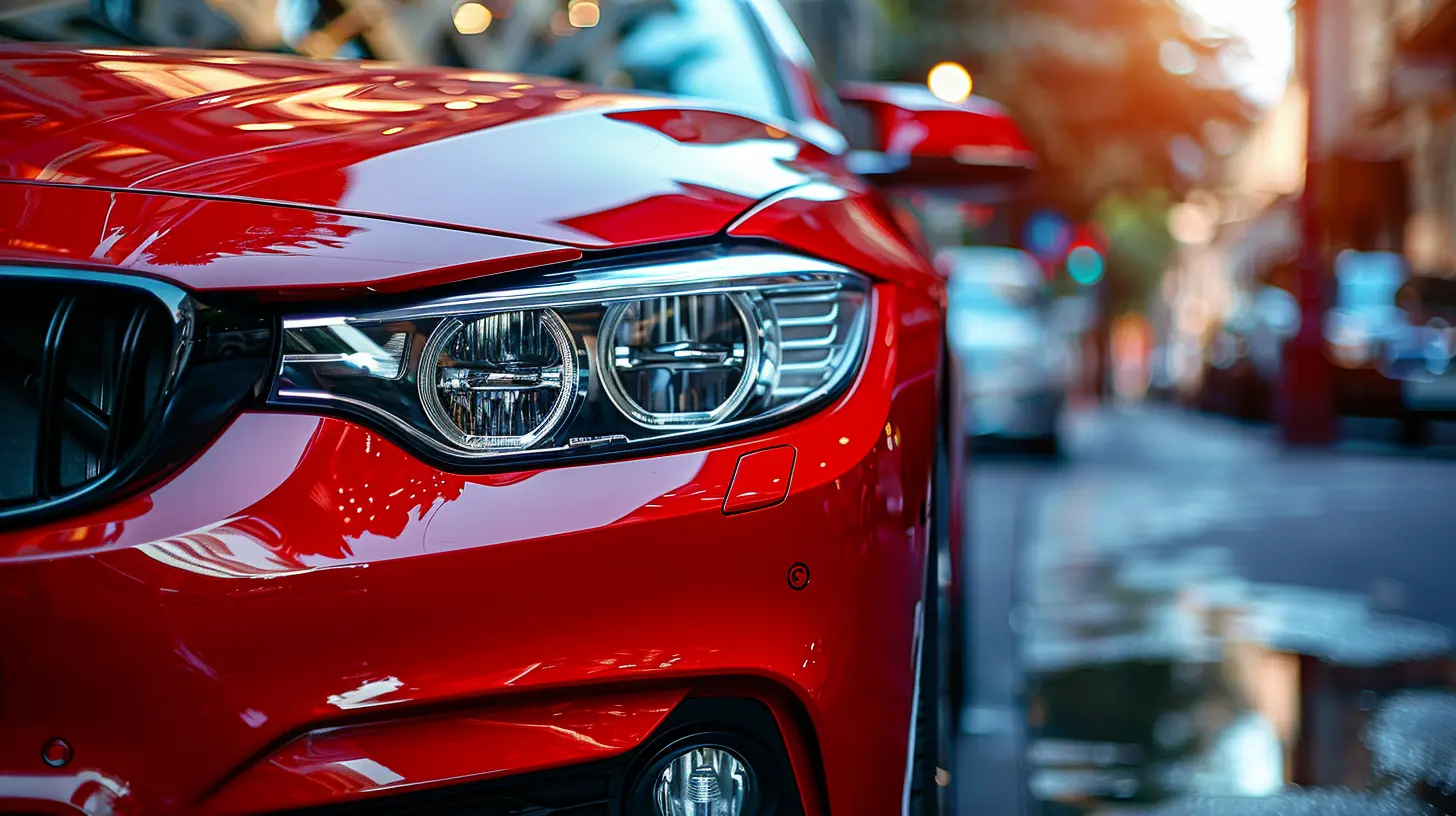Tax Deductions for Vehicle Use: Personal vs. Business Expenses
15 August 2025
When you're driving your car for business, you might be leaving money on the table if you're not aware of tax deductions. But there's a catch—only business-related vehicle use qualifies, not personal trips. So, how do you separate the two and maximize your deductions without getting on the IRS’s bad side? Let’s break it down in a way that actually makes sense. 
Understanding Tax Deductions for Vehicle Use
First, let’s get this straight: you can’t just claim every mile you drive as a deduction. The IRS has specific rules about what qualifies as a business expense, and understanding these can help you save big during tax season.There are two main methods for calculating vehicle-related deductions:
1. The Standard Mileage Deduction – A set amount per mile driven for business purposes.
2. The Actual Expenses Method – A percentage of actual costs like gas, maintenance, insurance, and depreciation.
Choosing the best method depends on your situation, and we’ll dive into both so you know exactly what works for you. 
Business vs. Personal Vehicle Use: What Qualifies?
Ever taken your car to a coffee shop to meet a client? That’s business use. Picked up groceries on the way home? That’s personal. The line between personal and business use can get blurry, so let’s clarify.What Counts as Business Use?
You can deduct vehicle expenses when using your car for purposes like:- Traveling to meet clients or customers
- Driving between different work locations (not just commuting)
- Delivering goods or providing services
- Business trips requiring transportation
- Driving to professional development events or networking meetups
What Doesn't Count?
On the flip side, these trips don’t qualify:- Commuting from home to your main office (unless you're self-employed and work from home)
- Running personal errands or going on leisure trips
- Driving your car for purely personal reasons, even if you discuss work during the trip
A simple way to think about it? If the drive was necessary for your business to function, you can probably deduct it. 
The Two Methods for Deducting Vehicle Expenses
Now that we know what qualifies, let's talk about how the IRS lets you deduct these expenses.Method 1: The Standard Mileage Rate
This is the easy route. Instead of tracking every dollar spent on gas, maintenance, and repairs, you just multiply the miles you drove for business by the IRS-determined rate.The rate changes yearly, but for 2024, it's 67 cents per mile for business use.
How It Works:
- Keep a log of your business miles. (More on record-keeping later!)- Multiply your total business miles by the IRS mileage rate.
- That number is the amount you can deduct.
For instance, if you drive 10,000 miles for business, your deduction would be $6,700 (10,000 x $0.67).
This method works best if you drive a lot for business but don’t have high vehicle expenses.
Method 2: The Actual Expenses Method
If your car expenses are significant, this method might save you more money. Instead of using a mileage rate, you track the actual costs of operating your vehicle, including:- Gas
- Repairs and maintenance
- Depreciation
- Insurance
- License and registration fees
- Lease payments
- Loan interest (for self-employed individuals)
How It Works:
- Add up all your vehicle-related costs for the year.- Determine the percentage of miles driven for business vs. total miles driven.
- Multiply your total expenses by your business use percentage.
For example, if you drove 15,000 miles in total, but 10,000 miles were for business, your business use percentage is 66.7%.
If your total vehicle expenses were $8,000, your deduction would be $5,336 (8,000 x 66.7%).
This method requires more record-keeping but can result in bigger savings if your car costs are high. 
Which Method Should You Choose?
Not sure which method to use? Here’s a quick way to decide:- Standard Mileage Method is better if you rack up business miles but have low vehicle expenses.
- Actual Expenses Method is better if you drive a lot and have high maintenance costs.
A smart strategy? Calculate both methods and pick the one that gives you the biggest deduction.
Keeping Track of Your Mileage (Without Losing Your Mind)
The IRS won’t just take your word for it—you need proper documentation. But don’t worry; tracking your miles doesn’t have to be a headache.Ways to Keep Records
1. Mileage Tracking Apps – Apps like MileIQ, Everlance, and Stride automatically log your trips and categorize them as business or personal.2. A Simple Logbook – Manually record each trip with the date, purpose, starting/ending location, and miles driven.
3. Spreadsheet Approach – If you’re a spreadsheet person, create a simple tracker with columns for trip details.
Pro tip: The IRS requires detailed records, so always log your trips as soon as possible to avoid forgetting them.
What Happens If You Mix Business and Personal Use?
Let’s say you drive to a client meeting, but on the way back, you stop for groceries. Can you deduct the trip? The general rule is:- If the trip was primarily for business, you can deduct the business portion and ignore the personal part.
- If it was mainly for personal reasons, you can’t deduct it at all.
A great way to avoid confusion? Keep personal and business trips separate whenever possible.
What If You Use a Company Car?
If you drive a company-provided car, things work differently. You typically can’t deduct expenses, since your employer is covering them. However, if you use the car for personal reasons, your employer could include that as part of your taxable income.If you’re self-employed and use a vehicle exclusively for business, you can deduct 100% of expenses. But if you mix business and personal use, you’ll still need to track and allocate expenses properly.
Final Thoughts: Maximize Your Tax Savings
Vehicle deductions can be a game-changer for your taxes, but only if you track them properly and use the best method for your situation. Whether you choose the standard mileage rate or actual expenses, keeping good records is key to avoiding trouble with the IRS while saving as much as possible.So, the next time you take a drive for business, make sure to log those miles—you’ll thank yourself when tax season rolls around!
all images in this post were generated using AI tools
Category:
Tax DeductionsAuthor:

Alana Kane
Discussion
rate this article
1 comments
Vireo Rivera
“Why let your car just sit there? Turn those tires into tax deductions! Just remember: personal joyrides don’t count—unless you’re driving to your next big deal!”
September 8, 2025 at 2:41 AM

Alana Kane
Great point! Always track your mileage and ensure it's for business to maximize your deductions.


